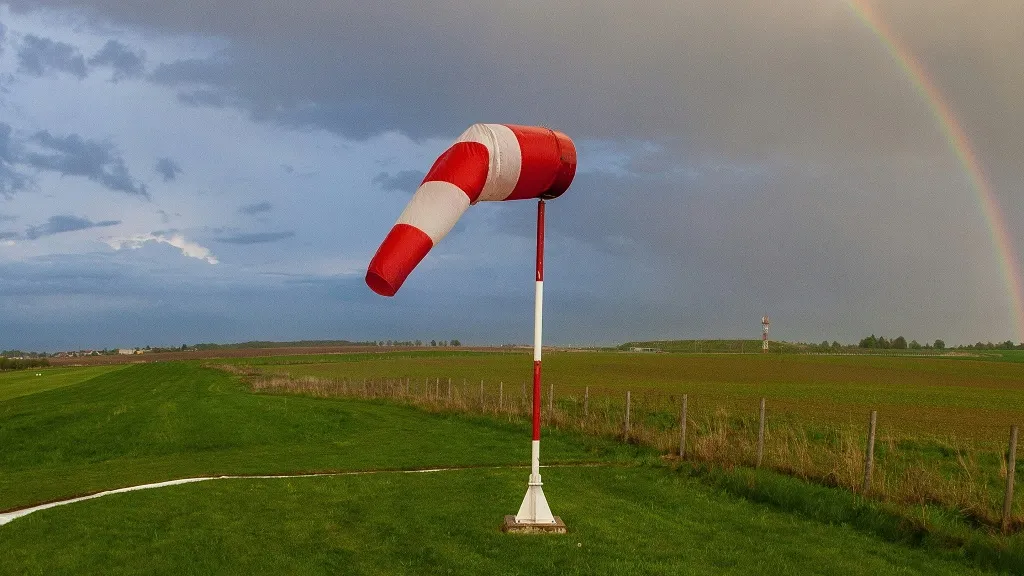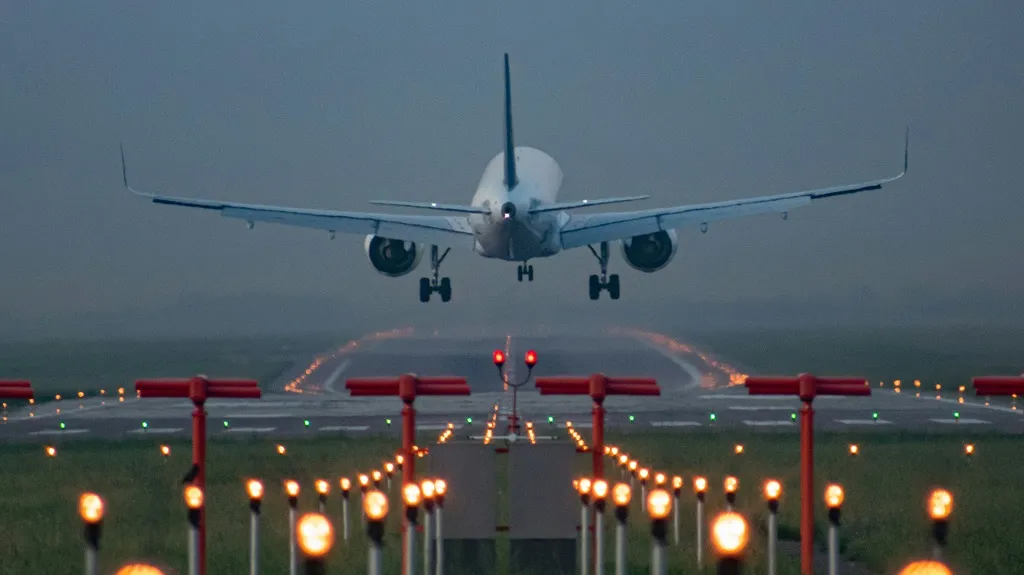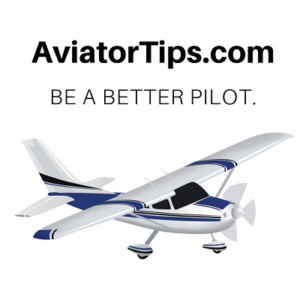The Real Impact of Crosswinds on Flight Safety
Crosswinds, the invisible forces pushing against an aircraft from the side, pose a significant challenge, especially during takeoff and landing. These winds, blowing perpendicular to the runway, can drastically impact aircraft stability. Pilots must execute precise control inputs to maintain a safe flight path. Truly understanding their impact goes beyond textbook knowledge. It requires developing an intuitive sense of how your aircraft will react.
Why Different Aircraft React Differently
Each aircraft type responds uniquely to crosswind conditions. This variation is due to differences in wingspan, weight, and landing gear configuration. A large, heavy aircraft with a long wingspan might be less affected by gusts than a smaller, lighter aircraft with shorter wings.
This difference highlights why it’s so important to know your aircraft’s specific crosswind limitations and handling characteristics. A pilot’s skill level also plays a significant role in managing these challenging scenarios effectively.
The Importance of Mental Mapping
Before even entering the cockpit, experienced pilots develop a mental map of the wind conditions. This proactive approach allows them to anticipate potential challenges and plan their approach accordingly. They visualize how the crosswind will affect the aircraft’s path and consider the necessary control adjustments.
This mental preparation is vital for a safe and smooth landing. It allows pilots to translate abstract wind reports into concrete actions.
Calculating the Crosswind Component
Calculating the crosswind component is essential for safe flight operations. Historically, pilots have employed several methods, including the nomograph chart, to determine this crucial value. For example, with a wind at a 45-degree angle to the runway, the crosswind component is roughly 75% of the wind speed. This quick calculation helps pilots assess the crosswind’s effect during flight planning.
If the wind speed is 20 knots at a 45-degree angle, the crosswind component is approximately 15 knots. This information is critical for maintaining aircraft stability and alignment during takeoff and landing. The Federal Aviation Administration (FAA) and other aviation authorities emphasize the importance of understanding crosswind components, particularly in challenging weather. (Explore this topic further at Gleim Aviation.)
From Calculation to Intuition
Understanding crosswind components is more than just plugging numbers into a formula. It’s about developing an intuitive understanding of how these forces affect your aircraft. This intuition, honed through experience, enables pilots to make quick, informed decisions in dynamic conditions, especially when encountering unexpected gusts or shifts in wind direction. The ability to translate calculations into practical control inputs is what distinguishes a skilled pilot. This skill is fundamental for safe operations in varying wind conditions.
Breaking Down the Mathematics That Keep You Safe
Beyond simply knowing there’s a crosswind, understanding its impact on your flight path is critical. This section explores the trigonometry involved, helping you translate wind reports into practical flight decisions.
Understanding Sine and Cosine in Crosswind Calculations
Calculating the crosswind component relies on sine and cosine. These trigonometric functions relate a right triangle’s angles to its sides’ lengths. For crosswind, the wind direction relative to the runway is the angle, and the wind speed is the hypotenuse.
- Crosswind Component: This is calculated by multiplying the sine of the angle between the wind and runway by the wind speed.
- Headwind/Tailwind Component: This uses the cosine of the same angle multiplied by the wind speed.
Let’s illustrate. A 20-knot wind at a 30-degree angle to the runway gives us:
- Crosswind Component: sin(30°) * 20 knots = 0.5 * 20 knots = 10 knots
- Headwind/Tailwind Component: cos(30°) * 20 knots ≈ 0.87 * 20 knots ≈ 17 knots

To further clarify these calculations, let’s look at a range of wind angles. This table shows the impact on crosswind and headwind components:
| Wind Angle to Runway | Wind Speed | Crosswind Component | Headwind Component |
|---|---|---|---|
| 0° | 20 knots | 0 knots | 20 knots |
| 15° | 20 knots | 5 knots | 19 knots |
| 30° | 20 knots | 10 knots | 17 knots |
| 45° | 20 knots | 14 knots | 14 knots |
| 60° | 20 knots | 17 knots | 10 knots |
| 75° | 20 knots | 19 knots | 5 knots |
| 90° | 20 knots | 20 knots | 0 knots |
As the table demonstrates, the crosswind component increases as the angle to the runway increases, while the headwind component decreases. Understanding this relationship is key for accurate flight planning.
Real-World Examples and the Impact of Errors
Even minor calculation errors can have significant consequences, especially during landing. A miscalculated crosswind could cause drifting off centerline, creating a hazardous situation. A 5-knot error could mean the difference between a safe landing and a runway excursion.
Precise calculations are therefore vital. This isn’t just theory; it’s about real-world safety.
The Pilot’s Mental Math Advantage
Experienced pilots often perform these calculations mentally. Through practice, they estimate crosswind components with remarkable accuracy, sometimes using rules of thumb like knowing a 30-degree angle yields roughly half the wind speed as the crosswind component.
You might also be interested in: How to master a flight computer.
However, verifying mental calculations with tools like a flight computer adds a layer of safety, especially in critical situations. Understanding the limitations of mental shortcuts prevents potentially dangerous oversimplifications.
Mental Math for Real-World Flying Scenarios
When you’re flying and encounter challenging conditions like turbulence and rapidly changing wind updates from Air Traffic Control (ATC), there’s often no time for complex calculations. This is where mental math becomes a crucial skill. Professional pilots use proven mental shortcuts to make quick decisions when needed.
Quick Calculation Methods for Different Wind Angles
Developing a good understanding of crosswind components is essential. Fortunately, a few techniques can help simplify this process. One such method is the “clock face” method, which helps translate wind angles into easy-to-grasp fractions of wind speed.
Imagine the wind direction relative to your heading as if it were the minute hand on a clock. A 15-degree difference is like 15 minutes on the clock face, one-quarter of the total wind speed will be your crosswind component. Similarly, a 30-degree difference corresponds to 30 minutes, meaning roughly half the total wind speed contributes to the crosswind.
Another helpful technique uses simple rules of thumb, like the “30 degrees is half” principle. This principle states that if the wind is 30 degrees off the runway heading, the crosswind component is approximately half the total wind speed. This simplifies estimation, especially in situations where detailed calculations aren’t feasible.
For instance, if the wind speed is 30 knots at a 30-degree angle to the runway, the crosswind component would be about 15 knots. These quick estimations allow pilots to make necessary adjustments to their flight path for safe landings. Using these rules of thumb is standard practice for pilots around the world. (Learn more about rules of thumb for flying.)
Knowing Your Limits: Aircraft and Personal
Quickly determining if a crosswind exceeds your or your aircraft’s limitations is paramount. This involves assessing the calculated crosswind component against the aircraft’s published limits. This quick check ensures you operate within safe parameters.

Remember, aircraft limitations aren’t the only factor to consider. Personal limitations and experience levels are just as important.
Learn how pilots determine wind direction while flying.
Risk Assessment in Dynamic Conditions
These quick calculation methods become especially important in changing weather conditions. A strong crosswind combined with turbulence requires constant reassessment. Pilots integrate these mental math skills into a thorough risk assessment process to make informed decisions about whether to continue or discontinue a flight.
Regularly practicing these mental math techniques helps pilots develop the intuition needed to confidently estimate crosswind components on the fly. This proficiency becomes a cornerstone of safe and efficient flight operations.
Choosing the Right Tools for Crosswind Calculations
The aviation world offers many tools for calculating crosswind components. But finding the right tool can significantly impact flight safety. This section evaluates popular options, from the classic E6B to modern aviation apps, examining their real-world effectiveness and how pilots can integrate them into pre-flight and in-flight routines.
Traditional Tools: E6B and Mental Math
The E6B flight computer, a circular slide rule, has long been a staple of pilot training. It offers a reliable, if sometimes cumbersome, way to calculate crosswind components. Its complexity, however, can be a challenge in high-stress situations.
Alongside the E6B, mental math remains a vital skill. Quick estimations using rules of thumb, such as the “30 degrees is half” principle (a 30-degree wind angle yields a crosswind component roughly half the wind speed), can be invaluable. These estimations should be verified with more precise tools when possible.
Modern Tools: Aviation Apps
Numerous aviation apps offer quick and easy crosswind calculations. These apps often include real-time weather updates and runway information, simplifying pre-flight planning. However, relying solely on digital tools carries risks. Battery life, software glitches, or signal loss can create critical vulnerabilities. For more on integrating these tools, check out our guide on How to master cross-country flight planning.
Comparing Calculation Methods
To better understand the differences between these tools, let’s look at a comparison table. The following table summarizes the key features and best uses of each method.
| Tool/Method | Accuracy | Ease of Use | Speed | Cost | Best For |
|---|---|---|---|---|---|
| E6B Flight Computer | High | Moderate | Moderate | Low | Flight planning, backup calculations |
| Mental Math | Moderate | High | High | Free | Quick estimations in flight |
| Aviation Apps | High | High | High | Varies | Pre-flight planning, in-flight updates |
Each tool has its strengths and weaknesses. The E6B offers high accuracy but moderate speed, while mental math is fast but less precise. Aviation apps provide a balance of accuracy and speed but can be costly and reliant on technology.
Integrating Multiple Approaches and Redundancy
The most effective strategy uses multiple tools. This redundancy ensures a backup is always available. A pilot might use an aviation app for pre-flight planning, double-check with the E6B, and use mental math for quick estimations in flight. This layered approach manages the risks tied to any single tool failing.
The Enduring Importance of Mental Math
Even with advanced aviation apps, solid mental math skills are essential. They offer a critical backup if technology fails and improve situational awareness by letting pilots quickly assess wind conditions. This combination of technology and core skills provides the best foundation for safe flight operations.
Translating Numbers Into Aircraft Performance Limits
Calculating the crosswind component is just the first step. The real question is: Can your aircraft, and more importantly, you, handle it? This involves understanding your aircraft’s limitations, establishing your personal minimums, and recognizing how runway conditions can drastically change the situation.
Understanding Aircraft Crosswind Limitations
Aircraft manufacturers conduct rigorous testing to determine the maximum demonstrated crosswind component. This important figure, found in your aircraft’s Pilot Operating Handbook (POH), represents the strongest crosswind in which the aircraft maintained successful control during testing. However, it’s crucial to remember this number isn’t a target to aim for on every landing.
This maximum demonstrated value is an upper limit, not a recommendation. Exceeding it significantly increases the risk of losing control, especially during critical phases of flight like landing. Choosing the right calculator, especially under pressure, is also important.
Safety Margins and Runway Conditions
A key element of flight safety revolves around understanding safety margins. Even if the calculated crosswind component falls below your aircraft’s limit, consider the impact of runway conditions. A wet or icy runway dramatically reduces tire friction, magnifying the effect of a crosswind.
For instance, a 15-knot crosswind on a dry runway might be manageable. However, that same 15-knot crosswind on a wet runway could present a serious hazard. Effective risk management involves adjusting your personal minimums to account for these changing conditions.
Check out this article on how to master crosswind landings.
Learning From Incident Reports
Reviewing aviation incident reports offers valuable insights into the consequences of misjudging crosswind components. Many accidents and incidents occur when pilots attempt landings in conditions that exceed their own, or their aircraft’s, capabilities.
These real-world events emphasize the importance of conservative decision-making. Learning from the mistakes of others can help prevent similar scenarios.
Setting Personal Minimums
Many professional pilots establish personal minimums that are more conservative than the aircraft’s published limitations. These personal limits, informed by experience, fatigue, and recent performance, provide an additional layer of safety.
Factors such as recent crosswind landing experience, current fatigue levels, and the aircraft’s overall performance should all influence your personal limits. For example, a tired pilot after a long day might choose a lower personal crosswind limit than they would when well-rested.
Go/No-Go Decisions
Turning calculated crosswind components into actionable decisions requires a structured decision-making process. Consider the following:
- Aircraft Limitations: Is the crosswind component within the POH’s stated limits?
- Personal Minimums: Are you truly comfortable and confident handling this specific crosswind?
- Runway Conditions: How will the runway surface impact aircraft performance?
- Current Conditions: Are there any additional factors, such as turbulence or wind gusts, increasing the overall risk?
Honest answers to these questions will lead you to a clear go/no-go decision. In aviation, prioritizing safety above all other factors is paramount.
From Numbers to Control Inputs: Mastering Crosswind Technique
Accurate crosswind calculations are essential, but they only represent the starting point. This section bridges the gap between theory and practical application, connecting calculated numbers to the actual control inputs required in the cockpit. We’ll explore how different crosswind values influence your approach speed, flap settings, and touchdown technique.

How Crosswind Values Influence Your Approach
Crosswind significantly impacts your approach. A 10-knot crosswind, for instance, demands different techniques than a 20-knot crosswind. Stronger crosswinds often necessitate higher approach speeds to maintain control authority, counteracting the drifting effect.
However, finding the right balance is key. Excessive speed can complicate the touchdown. Flap settings also play a crucial role. While full flaps generate additional lift, they also increase susceptibility to crosswind gusts.
Pilots frequently reduce flap settings in strong crosswinds to bolster stability and control, making informed decisions based on aircraft type and wind conditions.
Translating Calculations into Control Inputs
The ability to translate calculated crosswind components into precise control inputs is a skill developed through practice and expert guidance. Flight instructors specializing in crosswind training offer valuable insights, helping pilots develop the muscle memory needed for quick, accurate adjustments.
Consider a pilot anticipating a 15-knot crosswind from the right. They’ll establish a wing-low attitude into the wind using aileron to maintain runway alignment. Simultaneously, they’ll apply opposite rudder to prevent yawing, ensuring coordinated flight. This coordinated aileron and rudder usage is paramount for a stable approach and landing.
Common Crosswind Handling Mistakes and Recovery Techniques
Even experienced pilots can encounter challenges in crosswind conditions. Over-controlling the aircraft, making constant adjustments that amplify instability, is a common error. Another mistake involves failing to anticipate gusts and wind shifts, leading to deviations from the intended flight path.
Recovery techniques become especially critical when facing unexpected crosswinds on short final. If the crosswind suddenly intensifies, increasing the power can help regain airspeed and control. Furthermore, the readiness to execute a go-around is paramount. If the crosswind surpasses your comfort or safety limits, a go-around is always the wisest decision.
Check out our guide on Aeronautical Decision Making for more strategies to improve flight safety.
Touchdown Technique in Crosswind Conditions
The touchdown in a crosswind environment requires precision. The objective is to maintain the wing-low attitude into the wind while touching down on the upwind main gear. This prevents the wind from lifting the upwind wing and causing a loss of control.
Simultaneously, maintaining directional control with the rudder is crucial, ensuring the aircraft tracks straight down the runway centerline. As the aircraft decelerates, the pilot gradually levels the wings while maintaining rudder input. This technique ensures a controlled rollout, even in challenging conditions. Mastering this technique demonstrates a pilot’s skill and deep understanding of the complex forces at play during a crosswind landing.
Final Thoughts
Crosswinds are more than just a line in the METAR. They’re a test of a pilot’s skill, preparation, and decision-making. From calculating wind components to executing the perfect wing-low landing, safe crosswind operations require both knowledge and intuition. Whether you’re using mental math, a flight computer, or an app, the most important tools are sound judgment and personal limits rooted in experience. By mastering these techniques and respecting the forces at play, you can turn every crosswind challenge into a confident, controlled landing.
Recent Posts
FAA MOSAIC Final Rule: What Pilots, Manufacturers, and the Aviation Community Need to Know
Learn how the FAA’s MOSAIC final rule revolutionizes Light-Sport Aircraft certification, expands Sport Pilot privileges, and reshapes general aviation. See what’s changing, when it takes effect,...
Student Pilot Insurance: Essential Coverage for Aspiring Flyers
Discover how student pilot insurance can protect your flying dreams. Get expert tips and coverage options to ensure your safety and peace of mind.


